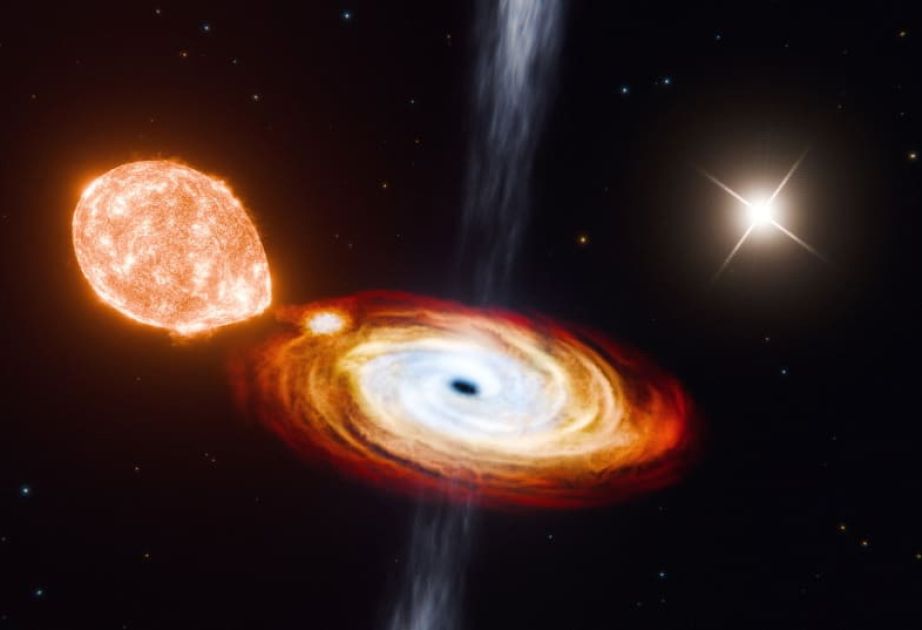Astronomers observed black hole forming in space

By Alimat Aliyeva
Most of the black holes discovered in space to date appear to be part of a pair. These binary systems consist of a black hole and a secondary object (such as a star, a denser neutron star, or another black hole) that spiral around each other, forming a tight orbital pair under the black hole's gravitational pull, Azernews reports.
A recent surprising discovery expands the understanding of black holes, their locations, and formation processes. In a study published in the journal Nature, physicists at the California Institute of Technology claim to have observed a "triple black hole" for the first time. Every 6.5 days, a new system pulls a small star very close to the black hole, causing the central black hole to absorb it. This configuration is similar to most binary systems. However, surprisingly, a second star also orbits the black hole at a greater distance, estimated to complete an orbit every 70,000 years.
The gravitational attraction of a black hole to such a distant object raises questions about its origin. It is believed that black holes form as a result of a powerful explosion of a dying star, a process known as a supernova, in which a star releases vast amounts of energy and light before collapsing into an invisible black hole.
However, the team's discovery suggests that if the newly discovered black hole had originated from a typical supernova, the energy released before collapse would have displaced any loosely connected objects nearby. Additionally, the outer star should not remain in place.
The team was searching for signs of new black holes in the Milky Way galaxy and, out of curiosity, studied the image of Burdge V404 Cygni. This black hole, confirmed in 1992, is located about 8,000 light-years from Earth. Since then, V404 Cygni has become the most studied black hole, featured in over 1,300 scientific articles. However, none of these studies reported the observation of Berge and its analogues.
Here we are to serve you with news right now. It does not cost much, but worth your attention.
Choose to support open, independent, quality journalism and subscribe on a monthly basis.
By subscribing to our online newspaper, you can have full digital access to all news, analysis, and much more.
You can also follow AzerNEWS on Twitter @AzerNewsAz or Facebook @AzerNewsNewspaper
Thank you!
